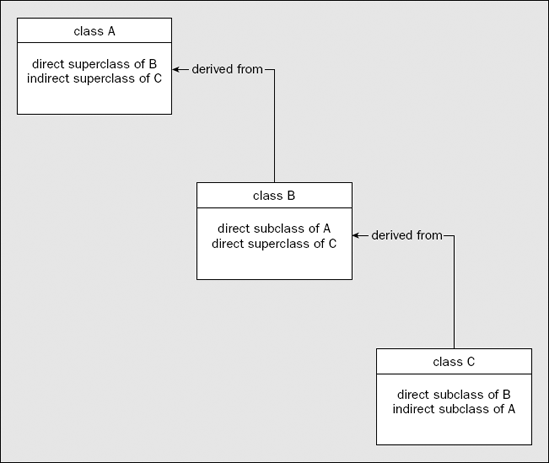6.1. Using Existing Classes
Let's start by understanding the jargon. Defining a new class based on an existing class is called derivation. The new class, or derived class, is referred to as a direct subclass of the class from which it is derived. The original class is called a base class because it forms the base for the definition of the derived class. The original class is also referred to as a superclass of the derived class. You can also derive a new class from a derived class, which in turn was derived from some other derived class, and so on. This is illustrated in Figure 6-1.
Figure 6.1. Figure 6-1

This shows just three classes in a hierarchy, but there can be as many as you like.
Let's consider a more concrete example. You could define a class Dog that could represent a dog of any kind:
class Dog {
// Members of the Dog class...
}
This might contain a data member identifying the name of a particular dog, such as Lassie or Poochy, and another data member to identify the breed, such as Border Collie or Pyrenean Mountain Dog. From the Dog class, you could derive a Spaniel class that represented dogs that were spaniels:
class Spaniel extends Dog {
// Members of the Spaniel class...
}
The extends keyword that you use here identifies that Dog is a base class for Spaniel, so an object of type Spaniel will have members that are inherited from the Dog class, in addition to the ...
Get Ivor Horton's Beginning Java™ 2, JDK™ 5th Edition now with the O’Reilly learning platform.
O’Reilly members experience books, live events, courses curated by job role, and more from O’Reilly and nearly 200 top publishers.

